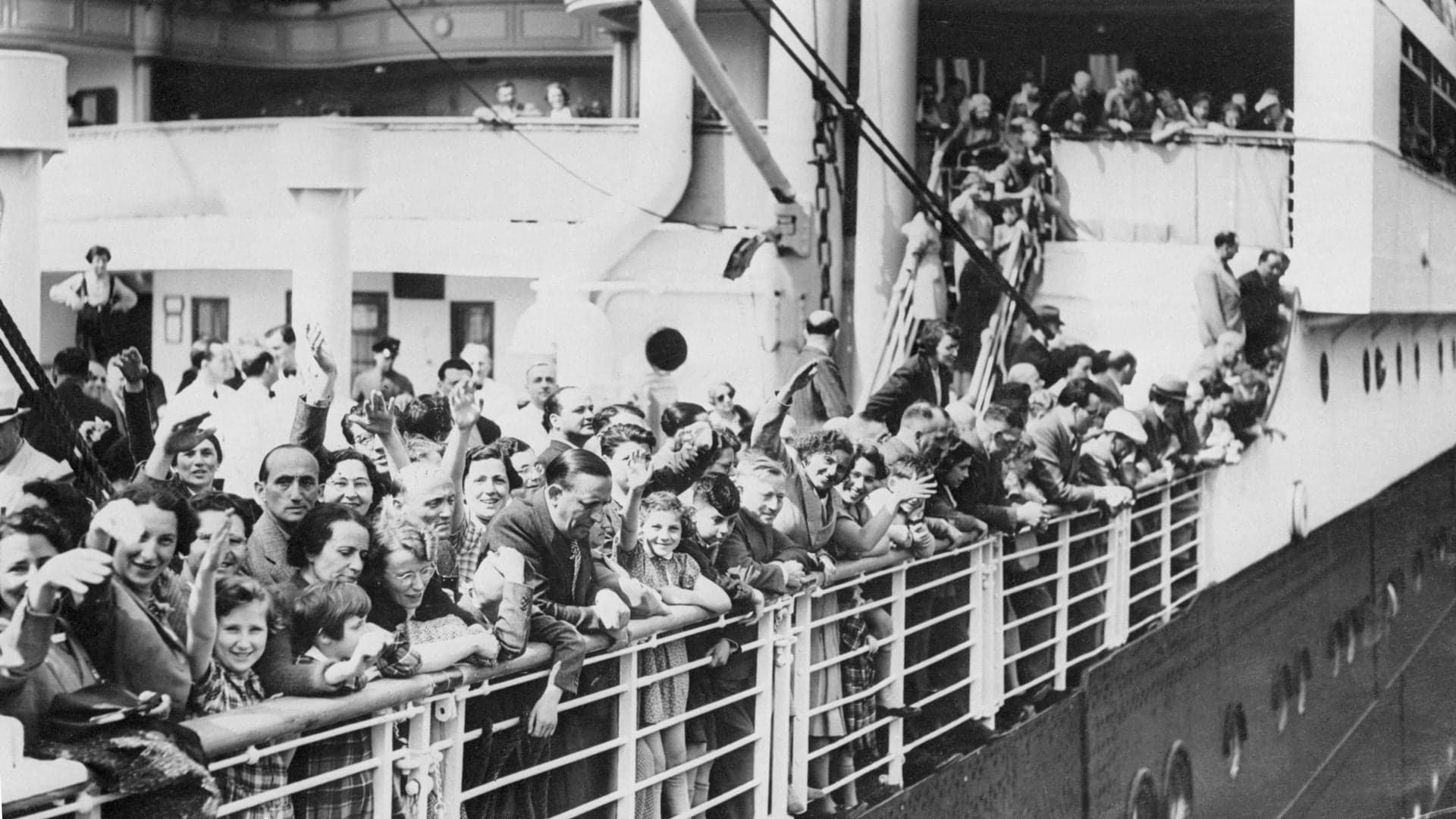A boat carrying 937 refugees, almost all of whom are Jews fleeing Nazi persecution, is turned away from Havana, Cuba, on May 27, 1939. Only 28 immigrants are admitted into the country. After appeals to the United States and Canada for entry are denied, the rest are forced to sail back to Europe, where they’re distributed among several countries including Great Britain and France.
On May 13, the St. Louis sailed from Hamburg, Germany to Havana, Cuba. Most of the passengers—many of them children—were German Jews escaping increasing persecution under the Third Reich. Six months earlier, 91 people were killed and Jewish homes, businesses, and synagogues were destroyed in what became known as the Kristallnacht pogrom. It was becoming increasingly clear the Nazis were accelerating their efforts to exterminate Jews by arresting them and placing them in concentration camps. World War II and the formal implementation of The Final Solution were just months from the beginning.
The refugees had applied for U.S. visas and planned to stay in Cuba until they could enter the United States legally. Even before they set sail, their impending arrival was greeted with hostility in Cuba. On May 8, there was a massive anti-Semitic demonstration in Havana. Right-wing newspapers claimed that the incoming immigrants were Communists.
The St. Louis arrived in Havana on May 27. Roughly 28 people onboard had valid visas or travel documents and were allowed to disembark. The Cuban government refused to admit the nearly 900 others. For seven days, the ship’s captain attempted to negotiate with Cuban officials, but they refused to comply.
The ship sailed closer to Florida, hoping to disembark there, but it was not permitted to dock. Some passengers attempted to cable President Franklin D. Roosevelt asking for refuge, but he never responded. A State Department telegram stated that the asylum-seekers must “await their turns on the waiting list and qualify for and obtain immigration visas before they may be admissible into the United States.”
As a last resort, the St. Louis continued north to Canada, but it was rejected there, too. “No country could open its doors wide enough to take in the hundreds of thousands of Jewish people who want to leave Europe: the line must be drawn somewhere,” Frederick Blair, Canada’s director of immigration, said at the time.
Faced with no other options, the ship returned to Europe. It docked in Antwerp, Belgium on June 17. By then, several Jewish organizations had secured entry visas for the refugees in Belgium, France, the Netherlands and Great Britain. The majority who had traveled on the ship survived the Holocaust; 254 later died as the Nazis swept through the continent.
